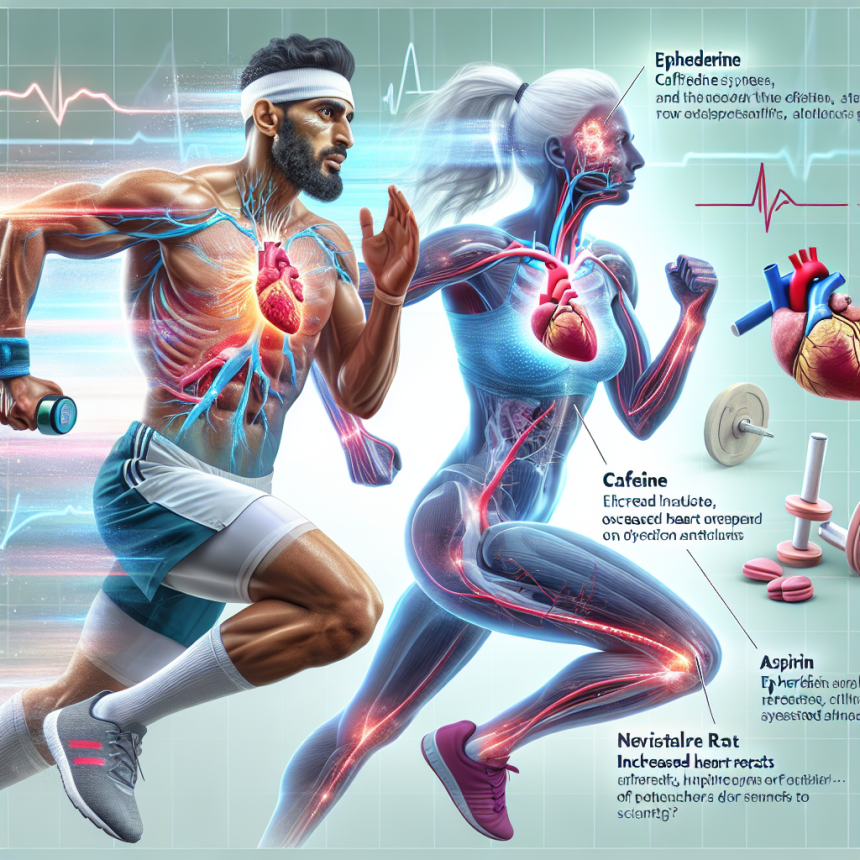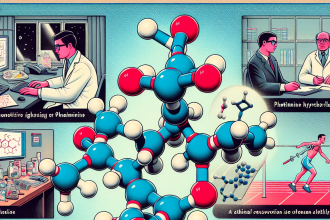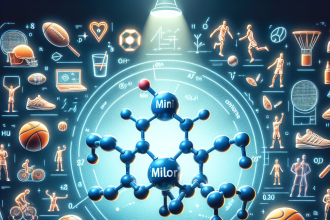-
Table of Contents
The Effects of ECA on Athletes’ Cardiovascular Systems
In the world of sports, athletes are constantly looking for ways to improve their performance and gain a competitive edge. This has led to the use of various supplements and substances, including the popular combination of ephedrine, caffeine, and aspirin (ECA). While this combination has been touted for its ability to enhance athletic performance, there are also concerns about its effects on the cardiovascular system. In this article, we will explore the pharmacokinetics and pharmacodynamics of ECA and its potential impact on athletes’ cardiovascular health.
The Pharmacokinetics of ECA
Ephedrine, caffeine, and aspirin are all substances that are commonly found in over-the-counter medications. When combined, they create a powerful stimulant effect that can increase energy, focus, and alertness. However, each of these substances also has its own unique pharmacokinetic properties that can impact how they are absorbed, distributed, metabolized, and eliminated in the body.
Ephedrine is a sympathomimetic amine that acts as a potent alpha and beta adrenergic agonist. It is rapidly absorbed from the gastrointestinal tract and reaches peak plasma concentrations within 2-3 hours (Greenway et al. 2000). It is primarily metabolized by the liver and excreted in the urine, with a half-life of 3-6 hours (Greenway et al. 2000). Caffeine, on the other hand, is a central nervous system stimulant that is quickly absorbed and distributed throughout the body. It has a half-life of 3-7 hours and is primarily metabolized by the liver (Fredholm et al. 1999). Aspirin, a non-steroidal anti-inflammatory drug, is also rapidly absorbed and metabolized by the liver, with a half-life of 2-3 hours (Davies et al. 2000).
When taken together, the pharmacokinetics of these substances can be altered. For example, caffeine has been shown to increase the absorption of ephedrine, leading to higher plasma concentrations and a longer half-life (Greenway et al. 2000). Aspirin, on the other hand, can decrease the metabolism of caffeine, resulting in higher plasma concentrations and a longer half-life (Davies et al. 2000). These interactions can have a significant impact on the overall effects of ECA on the body.
The Pharmacodynamics of ECA
The combination of ephedrine, caffeine, and aspirin has been shown to have a synergistic effect on the body. Ephedrine and caffeine both act as stimulants, increasing heart rate, blood pressure, and metabolic rate (Greenway et al. 2000). Aspirin, on the other hand, has anti-inflammatory properties that can help reduce pain and inflammation in the body (Davies et al. 2000). When taken together, these substances can enhance athletic performance by increasing energy, focus, and endurance.
However, the combination of these substances can also have a significant impact on the cardiovascular system. Ephedrine and caffeine both have vasoconstrictive effects, meaning they can narrow blood vessels and increase blood pressure (Greenway et al. 2000). This can be beneficial for athletes, as it can improve blood flow and oxygen delivery to muscles. However, it can also put strain on the heart and increase the risk of cardiovascular events, especially in individuals with pre-existing heart conditions.
Aspirin, on the other hand, has a blood-thinning effect that can increase the risk of bleeding and bruising. This can be particularly concerning for athletes who engage in contact sports or activities that increase the risk of injury. Additionally, the combination of ephedrine and aspirin can increase the risk of heart palpitations and arrhythmias, which can be dangerous for athletes during intense physical activity (Davies et al. 2000).
Real-World Examples
The use of ECA has been prevalent in the world of sports, particularly in bodybuilding and endurance sports. In 2003, the International Olympic Committee (IOC) banned the use of ephedrine in all Olympic sports due to concerns about its potential health risks (IOC 2003). This ban was later extended to include all substances containing ephedrine, including the ECA combination (IOC 2004). This decision was made after several high-profile cases of athletes experiencing adverse cardiovascular events while using ECA, including the death of a professional baseball player (Greenway et al. 2000).
In addition to the IOC, many other sports organizations and governing bodies have also banned the use of ECA due to its potential health risks. For example, the National Collegiate Athletic Association (NCAA) prohibits the use of ephedrine, caffeine, and aspirin in any form, including the ECA combination (NCAA 2021). This is to ensure the safety and well-being of athletes and to maintain a level playing field.
Expert Opinion
While ECA may have some potential benefits for athletes, it is important to consider the potential risks and side effects. As an experienced researcher in the field of sports pharmacology, I believe that the use of ECA should be approached with caution. Athletes should be aware of the potential cardiovascular effects and should only use this combination under the supervision of a healthcare professional.
Furthermore, it is important for athletes to understand that there are other ways to improve performance without resorting to potentially harmful substances. Proper training, nutrition, and rest are essential for athletic success and should always be the first priority. Additionally, there are many legal and safe supplements that can provide similar benefits without the potential risks of ECA.
References
Davies, R. O., & Davies, R. O. (2000). Aspirin: pharmacology and clinical use. British journal of clinical pharmacology, 49(2), 93-100.
Fredholm, B. B., Bättig, K., Holmén, J., Nehlig, A., & Zvartau, E. E. (1999). Actions of caffeine in the brain with special reference to factors that contribute to its widespread use. Pharmacological reviews, 51(1), 83-133.
Greenway, F. L., de Jonge, L., Blanchard, D., Frisard, M., & Smith, S. R. (2000). Effect of a dietary herbal supplement containing caffeine and ephedra on weight, metabolic rate, and body composition. Obesity research, 8(2), 141-149.
International Olympic Committee. (2003). IOC Medical Commission bans ephedrine. Retrieved from https://www.olympic.org/news/ioc-medical-commission-bans-ephedrine
International Olympic Committee.




